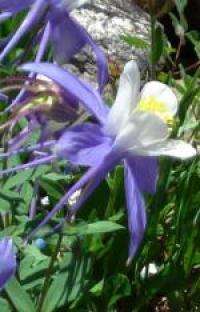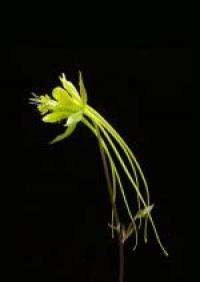Study of flower color shows evolution in action

Scientists at UC Santa Barbara have zeroed in on the genes responsible for changing flower color, an area of research that began with Gregor Mendel's studies of the garden pea in the 1850's.
In an article published recently in the Proceedings of the National Academies of Sciences, two researchers document their studies of the evolution of columbine flowers in North America. They studied red columbines pollinated by hummingbirds, and white or yellow columbines pollinated by hawkmoths. They believe that a color shift from red to white or yellow has happened five times in North America.
"What is important in this research is that hawkmoths mostly visit -- and pollinate -- white or pale flowers," said senior author Scott A. Hodges, professor of ecology, evolution and marine biology at UCSB. "We have shown experimentally that hawkmoths prefer these paler colors."

When a plant population shifts from being predominantly hummingbird-pollinated where flowers are red, to hawkmoth-pollinated, natural selection works to change the flower color to white or yellow, he explained.
"Ultimately we want to know if evolution can be predictable," said Hodges. "In other words, we want to know if each time there is an evolutionary change in flower color, does it happen in the same way? Having identified all the genes that are intimately involved with making red and blue columbines now allows us to determine how these evolutionary transitions have occurred."
In earlier research, Hodges showed that flowers evolve in a predictable fashion to match the mouthparts of pollinating birds and insects. Thus the pollinators of the yellow columbine flower, A. longissima, are predicted to have exceptionally long tongues to reach the nectar at the bottom.
Source: University of California - Santa Barbara (news : web)
















